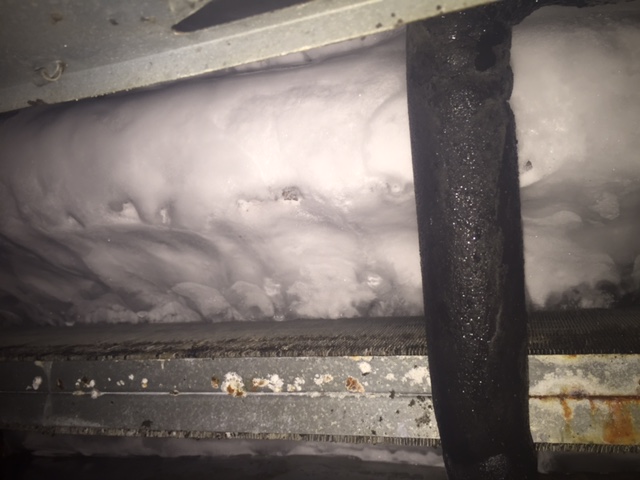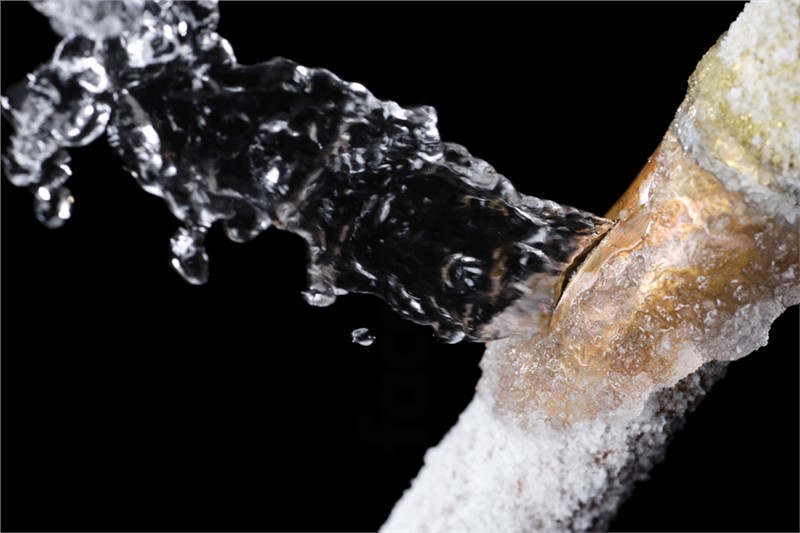How to Deal With a Frozen AC Pipe - Critical Measures for Recovery
How to Deal With a Frozen AC Pipe - Critical Measures for Recovery
Blog Article
How do you actually feel with regards to Why Is Ice On My Outside Air Conditione?

Intro
Finding that your a/c pipeline is frozen can be concerning, especially during hot summer months when you rely on your a/c unit the most. Understanding what to do in such a situation is essential to prevent more damages to your air conditioning system and ensure your comfort indoors.
Understanding the Causes
Several elements can contribute to the freezing of an air conditioning pipe. Comprehending these causes can help you deal with the issue effectively.
Absence of Airflow
One usual source of an icy air conditioner pipeline is inadequate air movement. When the air movement over the evaporator coil is limited, it can trigger the coil to drop below freezing temperature level, leading to ice development on the pipeline.
Reduced Refrigerant Levels
Inadequate refrigerant levels in your air conditioning system can also cause an icy pipe. Reduced refrigerant degrees can trigger the pressure in the system to go down, bring about the cold of wetness on the evaporator coil.
Cold Weather Conditions
In cooler climates, freezing temperatures outside can add to the cold of a/c pipes. If your AC device is not appropriately protected or if there are leaks in the ductwork, cool air can penetrate the system, causing the pipeline to freeze.
Dirty Air Filters
Filthy or clogged air filters can limit airflow in your a/c system, leading to numerous issues, consisting of a frozen pipe. It's essential to replace or cleanse your air filters consistently to guarantee correct air flow and prevent ice accumulation.
Indicators of a Frozen Air Conditioning Pipe
Identifying the indications of an icy AC pipe is critical for prompt activity.
Reduced Airflow
If you observe a substantial decrease in air flow from your vents, it can indicate a frozen pipe.
Ice Buildup on the Pipe
Noticeable ice buildup on the cooling agent line or the evaporator coil is a clear sign of a frozen air conditioning pipe.
Weird Sounds from the Unit
Uncommon sounds, such as hissing or bubbling, originating from your air conditioner unit can indicate that there's ice existing on the pipeline.
Immediate Actions to Take
When confronted with a frozen air conditioning pipe, it's important to act promptly to prevent further damage to your air conditioning system.
Switching off the AC
The initial step is to shut off your ac unit to prevent the system from running and exacerbating the issue.
Checking for Blockages
Examine the area around the interior device for any kind of blockages that might be obstructing air movement, such as furnishings or drapes.
Defrosting the Pipe
You can use gentle approaches like placing towels soaked in cozy water around the icy pipeline to help thaw it slowly.
Safety nets
Taking safety nets can aid avoid future events of a frozen air conditioning pipe.
Routine Maintenance Checks
Set up normal maintenance consult an expert HVAC professional to make certain that your a/c system is running successfully.
Changing Air Filters
Routinely replace or clean your air filters to avoid air flow limitations and keep ideal performance.
Protecting Exposed Pipes
If your AC pipelines are revealed to chilly temperatures, consider shielding them to avoid cold during winter season.
Seeking Professional Help
If DIY methods fail to resolve the issue or if you're unsure about just how to continue, it's ideal to look for help from a certified HVAC technician.
When DIY Methods Fail
If your efforts to thaw the pipeline or address various other problems are unsuccessful, it's time to hire a professional.
Importance of Hiring a Professional HVAC Technician
A licensed HVAC technician has the experience and devices required to detect and fix issues with your a/c system safely and properly.
Final thought
Dealing with an icy air conditioner pipe can be an irritating experience, yet understanding how to react can assist reduce damage and bring back convenience to your home. By comprehending the causes, recognizing the indications, and taking prompt action, you can properly deal with the concern and prevent future occurrences.
Frozen AC Line: Why It Happens & What To Do About It
A frozen AC line can be a rather peculiar sight in a place like Phoenix, Arizona where nothing ever freezes. In this post, we’ll discuss what makes an air conditioner line frozen – and what you can do about it.
Dirty Air Filters
Did you know that you should be cleaning or replacing your air filters on a monthly basis? Failing to do this can result in airflow issues that, in turn, cause your evaporator coils and lines to freeze over. You’ll notice a buildup of ice on both components, although the buildup on your pipes will, of course, be more evident unless you open your air condition up to reveal the coils.
What To Do About It
Give your air filter a good cleaning if it’s reusable. If not, replace the filter outright. Next, switch your air conditioner’s fan setting on and leave it there for 2-3 hours. This will draw warm air in, helping to thaw your evaporator coil. You can also check out this article for some tips on cleaning the coils themselves if you’d like to speed the process up. Before you switch the unit back to its normal state, make sure the supply vents are completely unobstructed and free of dust or other debris.
If you keep having this issue even after replacing your filters regularly, contact a local HVAC repair company and have them inspect your evaporator coil, ductwork, and any other components that may be at fault. If you live in the Phoenix, Arizona area, give American Home Water and Air a call.
Low Refrigerant Levels/Leakage
What To Do About It
Contrary to what air conditioner “recharge” companies often tell their clients about refrigerant, it should never need to be simply refilled. You see, refrigerant runs in what experts refer to as a “closed loop.” Refrigerant really shouldn’t be leaving that loop. If it is, you’ve got a leak.
Paying someone to come and pump more refrigerant into your system (aka “recharge” it) isn’t the solution. Doing that will simply kick the can down the road. Besides, refrigerant leaks can be harmful to the environment and people in your home.
Rather, you need to take care of the leak with the help of a technician. Check out this article for some more information about dealing with air conditioners that are leaking refrigerant. Before you contact a technician, switch your thermostat to the off position. Then, switch the fan setting on and let it run for 2-3 hours so the unit can thaw.
Improper Temperature Setting
Improper temperature settings can also cause a drop in your air conditioner’s pressure. What many people don’t realize is that air conditioners are actually designed to run when temperatures have fallen above roughly 60 degrees Fahrenheit. If you run the unit when it’s cold outside, you’ll run into many issues, including frozen components.

As an avid reader about Why Is Ice On My Outside Air Conditione, I was thinking sharing that article post was a smart idea. Appreciated our blog? Please share it. Let somebody else find it. Thank you for your time spent reading it.
Click Here Report this page